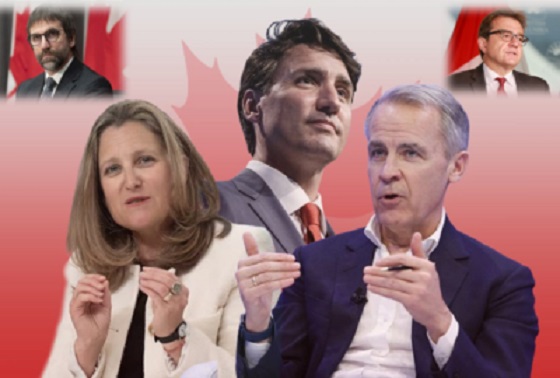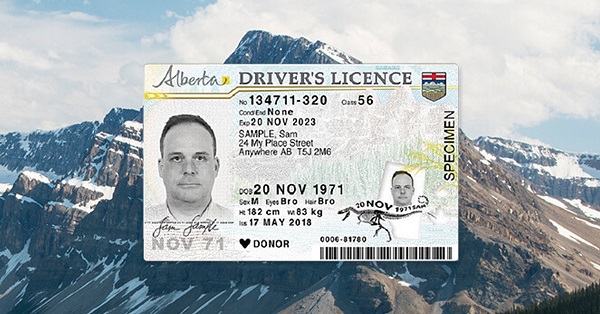Business
Carney can rescue health care by loosening restrictions of the Canada Health Act

From the Fraser Institute
Although rubber has yet to meet road, Prime Minister Mark Carney is vowing to reverse many of the policy failures of previous administrations. His government plans to greatly increase defence spending, streamline the infrastructure approval process, and reduce provincial non-tariff barriers.
But while the government is right to focus on these measures, which aim to counter President Donald Trump’s tariff and annexationist threats, it’s easy to forget that Canada faced serious challenges long before The Donald arrived in the White House for his first term, let alone for his second.
First among these challenges is the crisis in health care. Six-and-a-half million Canadians lack a family doctor. Emergency room wait times can stretch on hour after hour. Prince Edward Island is the worst, with a median wait time of almost three hours before a patient first sees a physician. People in Ontario often have to wait months for an MRI scan. Some people travel to Buffalo where clinics offer to provide the service in a matter of days.
The median wait time between referral by a family doctor to treatment by a specialist in 2024 reached 30 weeks, the longest gap ever and more than three times the median wait in 1993, according to a study published by the Fraser Institute. In category after category, provincial health-care systems struggle to meet the standards they set for themselves.
If Carney really wanted to be remembered as a transformative prime minister, he would tackle this crisis by loosening the restrictions of the Canada Health Act.
The Act, and other laws and regulations banning user fees and extra billing, effectively prohibit provincial governments from permitting private health insurance to supplement public insurance for essential services. This has prevented the provinces from developing the sorts of private-sector safety valves used in developed countries around the world that also have universal health-care systems.
For instance, another report shows that Swiss citizens are able to choose among dozens of competing private-sector insurance plans that allow access to medically essential and publicly funded services. While there are copayments, public programs help lower-income patients to offset the costs.
In Australia, citizens are required to obtain private health insurance to supplement public coverage. That insurance, according to a federal government website, permits patients to receive “treatment in public or private hospitals as a private patient with the doctor of your choice” along with “health services that are not covered under Medicare such as physiotherapy, dental and optical.” Citizens who don’t obtain private insurance must pay a hefty Medicare Levy Surcharge of up to 1.5 per cent of taxable income. There are programs to offset the surcharge for low-income citizens.
In the Netherlands, to offer just one more example, the federal government also pays private health insurers to provide basic care, while allowing citizens who wish to pay for supplemental insurance.
Canadians pay a high price for the lack of private-sector insurance. According to the annual report comparing universal health-care countries published by the Fraser Institute, in 2023, 65.2 per cent of Canadians polled reported waiting more than one month for an appointment with a specialist compared to 51.9 per cent in Australia, 36.3 per cent in Switzerland and 35.7 per cent in the Netherlands.
The Commonwealth Fund, an U.S. non-profit health-care think-tank, ranked Canada seventh, in a study of how well 10 developed countries delivered health care. Australia ranked first.
A 2024 study ranked countries by how well they delivered various services. In that survey, the Netherlands came in 18th in the category of physicians per capita. Australia ranked seventh. Switzerland ranked sixth. Canada ranked 28th.
And yet, it terms of health-care spending as a share of GDP, Canada ranked fourth, Australia ninth and the Netherlands 13th. Switzerland came in at number two.
There is, in other words, little correlation between spending on health care and the health of the system. There is, however, strong evidence that countries offering universal public care—supplemented by private-sector alternatives—do better than Canada.
Mark Carney could go down in history as the prime minister who rescued Canada’s health-care system. Loosening the restrictions of the Canada Health Act to permit supplemental private plans for essential care in provinces that choose to adopt them, and reforming other troubling aspects of the Act, would set the stage for real innovation, experimentation and reform by the provinces.
Based on the evidence of jurisdictions from Sweden to Singapore, the first provinces to open the door to private insurance and related reforms would quickly see improvements in wait times and other metrics. Other provinces would likely soon follow.
Business
Crown corporations dish out $190 million in bonuses

The federal government rubberstamped more than $190 million in bonuses to Crown corporations in 2024-25, according to government records obtained by the Canadian Taxpayers Federation.
“Bonuses are for when you do a good job, they shouldn’t be handed out like participation trophies,” said Franco Terrazzano, CTF Federal Director. “Taxpayers can’t afford to bankroll big bonus cheques each and every year for highly paid government executives.
“Here’s a crazy idea: maybe the government should stop handing out bonuses when it’s borrowing tens of billions of dollars every year.”
The records detailing Crown corporation bonuses for 2024-25 were released in response to an order paper question submitted by Conservative member of Parliament Andrew Scheer (Regina-Qu’Appelle).
Crown corporations dished out $190.3 million in bonuses for the last fiscal year, according to the records. The records break down both executive and non-executive bonuses.
The Business Development Bank of Canada issued more bonuses than any other Crown corporation, with its bureaucrats taking home more than $60 million. Every executive took a bonus, with the average executive bonus totalling $216,000, according to the records.
Several failing Crown corporations rubberstamped bonuses.
The Canada Mortgage and Housing Corporation rubberstamped $30.6 million in bonuses last year. Nearly 99 per cent of CMHC executives took a bonus, for an average executive bonus of $42,900, according to the records.
The CMHC has repeatedly claimed it’s “driven by one goal: housing affordability for all.”
In 2024, the Royal Bank of Canada said it was the “toughest time ever to afford a home.” More than 70 per cent of Canadians who do not own a home said “they have given up on ever owning” one, according to polling from Ipsos.
VIA Rail also dished out $11 million in bonuses in 2024-25. The records show 100 per cent of its executives took a bonus last year. The average bonus for VIA Rail executives is $110,000.
VIA Rail’s operating losses totaled $385 million in the most recent year, according to its latest annual report. The government bailed out VIA Rail to the tune of $1.9 billion over the last five years just to cover the train company’s operating losses.
The Canada Infrastructure Bank dished out $8.6 million in bonuses in 2024-25. The records show 83 per cent of its executives took a bonus, for an average executive bonus of $197,000.
“The CIB is not expected to reach its disbursement goals in any sector by 2027-28,” according to the Parliamentary Budget Officer.
In May 2022, the House of Commons Standing Committee on Transport, Infrastructure and Communities tabled a report with only one recommendation: “The Government of Canada abolish the Canada Infrastructure Bank.”
Multiple Crown corporations including Canada Post and the National Capital Commission, did not provide bonus records for 2024-25. Both Crown corporations said they had “nothing to report at this time.”
Federal departments and agencies have yet to provide bonus figures for 2024-25. However, the government rubberstamped more than $1.5 billion in bonuses to bureaucrats employed by federal departments and agencies between 2015 and 2023. The bonuses kept flowing despite the fact that “less than 50 per cent of [performance] targets are consistently met within the same year,” according to the PBO.
Prime Minister Mark Carney is requiring Crown corporations to propose savings of up to 15 per cent of their spending by 2028, according to media reports.
“The first thing on Carney’s chopping block should be taxpayer-funded bonuses,” Terrazzano said. “We need a culture change in Ottawa and that means the government must stop rewarding failure with taxpayers’ money.”
Table: Crown corporations with highest bonuses 2024-25
| Crown corporation | Total bonuses | Executives who got a bonus | Average executive bonus |
| Business Development Bank of Canada |
$60,742,616 |
100% |
$216,093 |
| Export Development Canada |
$45,044,281 |
79% |
$143,323 |
| Canada Mortgage and Housing Corporation |
$30,636,283 |
99% |
$42,982 |
| Royal Canadian Mint |
$12,155,211 |
N/A |
N/A |
| VIA Rail |
$11,031,412 |
100% |
$110,768 |
Business
Canadian gov’t spending on DEI programs exceeds $1 billion since 2016

From LifeSiteNews
Some departments failed to provide clear descriptions of how the taxpayer funds were used. For example, Prairies Economic Development Canada spent $190.1 million on projects related to diversity, equity and inclusion ventures but could not provide details.
Federal diversity, equity and inclusion programs have cost Canadian taxpayers more than $1 billion since 2016.
According to information published September 18 by Blacklock’s Reporter, diversity, equity and inclusion (DEI) government grants have totaled $1.049 billion since 2016, including grants for “cultural vegetables.”
A $25 million grant, one of the largest individual grants, was given to the Canadian Gay and Lesbian Chamber of Commerce to “strengthen Canada’s entrepreneurship ecosystem to be more accessible to LGBTQ small businesses.”
The government payouts were distributed among 29 departments, ranging from military to agricultural projects.
The Department of Agriculture spent $90,649 for “harvesting, processing and storage of cultural vegetables to strengthen food security in equity-deserving Black communities” in Ontario.
Some departments failed to provide clear descriptions of how the taxpayer funds were used. For example, Prairies Economic Development Canada spent $190.1 million on projects related to diversity, equity and inclusion ventures but could not provide details.
“PrairiesCan conducted a search in our grants and contributions management system using the keywords ‘equity,’ ‘diversity’ and ‘inclusion,’” the Inquiry said. “Certain projects were included where diversity, equity and inclusion were referenced but may not be the main focus of the project.”
DEI projects are presented as efforts by organizations to promote fair treatment, representation, and access to opportunities for people from varied backgrounds. However, the projects are often little more than LGBT propaganda campaigns funded by the Liberal government.
As LifeSiteNews reported, the University of British Columbia Vancouver campus posted an opening for a research chair position that essentially barred non-homosexual white men from applying for the job.
Additionally, during his short time in office, Liberal Prime Minister Mark Carney has already shown Canadians that he is a staunch supporter of the LGBT agenda after he spent over $2 million in taxpayer funding on LGBT groups during his first week in office.
Canadians have repeatedly appealed to Liberals to end pro-LGBT DEI mandates, particularly within the education system.
As LifeSiteNews previously reported, in June 2024, 40 Canadian university professors appealed to the Liberal government to abandon DEI initiatives in universities, arguing they are both ineffective and harmful to Canadians.
-

 Business2 days ago
Business2 days agoCarney’s ‘major projects’ list no cause for celebration
-

 Business2 days ago
Business2 days agoGlobal elites insisting on digital currency to phase out cash
-

 Business1 day ago
Business1 day agoRed tape is killing Canadian housing affordability
-

 Artificial Intelligence1 day ago
Artificial Intelligence1 day agoUK Police Chief Hails Facial Recognition, Outlines Drone and AI Policing Plans
-

 Health1 day ago
Health1 day agoMAiD should not be a response to depression
-

 Business1 day ago
Business1 day agoOttawa’s so-called ‘Clean Fuel Standards’ cause more harm than good
-

 Business1 day ago
Business1 day agoThe Truth Is Buried Under Sechelt’s Unproven Graves
-

 International1 day ago
International1 day agoFrance records more deaths than births for the first time in 80 years







